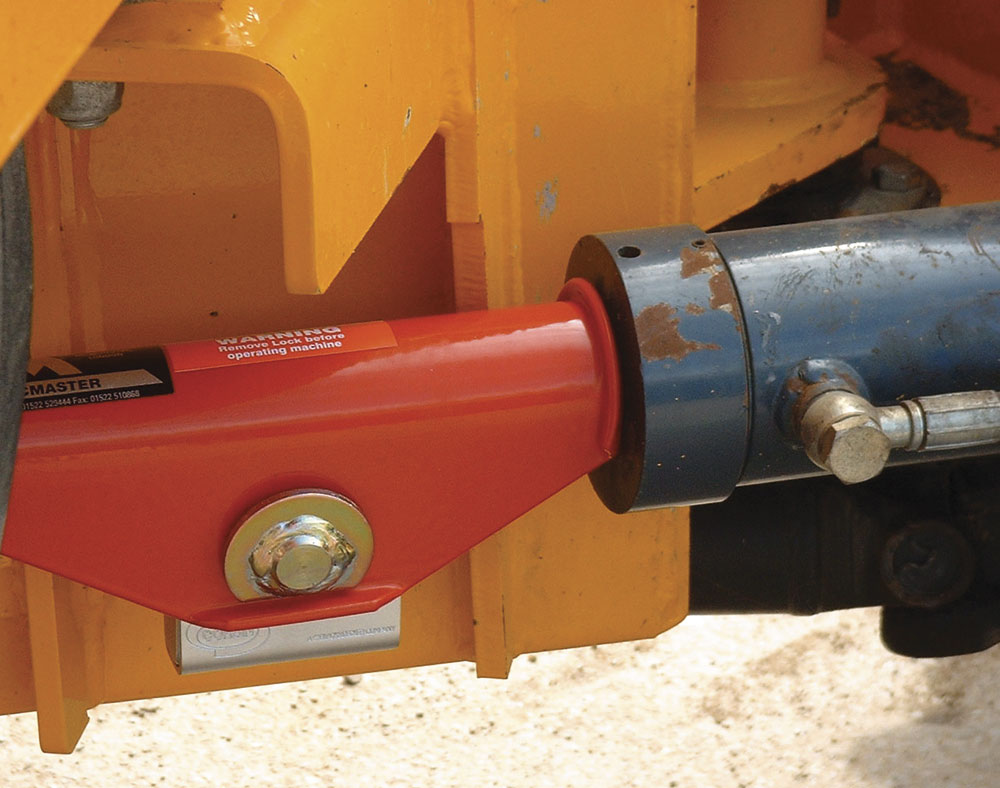Lock It! Or Lose It!

Physical security devices – a key element in preventing plant theft
In October 2000 the Home Office introduced the ‘Plant Security Guidance’ Code of Practice, requiring all manufacturers of plant equipment sold into the UK to consider carefully the obvious theft issues. This was because plant thieves had become more ‘professional’. Although smaller plant may be driven away or lifted off site using a lorry-mounted crane, larger plant is usually stolen to order as moving it along a road under its own power or on to a low-loader requires careful logistical planning.
Since that time, various tracking systems have been brought to market, designed with the very useful ability to provide management information but, more often than not, marketed as high-technology devices to stop theft. In many cases, however, all that a user will know is where the machine was when it was stolen but not where it is now. This is because these tracking systems are capable of being defeated not only by low-technology means, but also by new technology that is readily available to counteract them – in the form of jammers. The use of jamming technology is illegal in the UK, but that is of little interest to the thieves.
Moreover, since the introduction of the EU Health & Safety Directive, employers are not only required to take every reasonable precaution to minimize the risk of injury to their employees, but also to joyriders, vandals and thieves, even though they have no right to be there in the first place. Securing perimeters and plant properly is important not only in minimizing the risk of theft, but also in minimizing the risk of any resultant legal action.
For plant items, there are a number of aspects that must be considered together rather than individually if users are to ensure that the thieves stay away. These form part of a properly managed security or risk-management plan, key elements of which are: education, specialist physical security, and identification.
Education — Unless the user’s staff are ‘on board’ and familiar with the security or risk-management plan and the various elements incorporated within it, the company will be wasting its time and money. Education is key in the first instance.
Specialist physical security — At the forefront of any plan should be immobilization – to stop plant being stolen in the first place. Immobilizers act as immediate visual deterrents to opportunist thieves and joyriders; the opportunist thief will be completely defeated, while the so-called ‘professional’ thief will, at least, be forced to reconsider and, at best, will move on elsewhere to easier pickings.
Costing very little and requiring few, if any, machine modifications, specialist physical security products which provide a unique key that restricts the number of persons who can activate the plant to only those who are authorized to do so are an attractive proposition.
Well known examples of other effective anti-theft devices are: the Lincmaster Ramlok, which, when fitted over the hydraulically operated steering ram, ensures that, at best, the machine can only be driven in a circle and thus not driven away or on to a low loader; and the Lincmaster Leg-Lock, which forms a permanent part of a backhoe loader, locking the stabilizer leg with the wheel off the ground to prevent the machine being driven away. In addition, a new device – the Sprocketlok – is currently being developed and field tested for large tracked excavators.
For trailed plant, the Lincmaster Bosslok is a special lockable towing pin which immobilizes the coupling of a trailer or trailed plant to prevent unauthorized tow away.
Trailers with 50mm ball couplings can be secured with the Lincmaster HD Hitchlok. Specifically designed for the construction and contract plant equipment market, the HD Hitchlok can also utilize Lincmaster HD security chain to prevent theft by lifting or dragging.
Identification — Marking, ie adding hidden transponders and microdots, and placing plant details on a secure database. A number of these items have been competing with each other for several years, but no one item is sufficient in its own right and particularly if the police have no idea where to look for the identification mark.
Nevertheless, if positively identified, the thief will not find it easy to sell the item or the parts if the police and others can also easily identify them, thus depriving the thief of his motive.
Ultimately, as with most things, prevention is far better than cure. Fitting physical security devices to help prevent the theft of plant in the first place is infinitely preferable to the inconvenience and cost involved in recovering or replacing stolen machines.
For further information on plant security visit: www.lincmaster.co.uk or www.ptstools.co.uk


